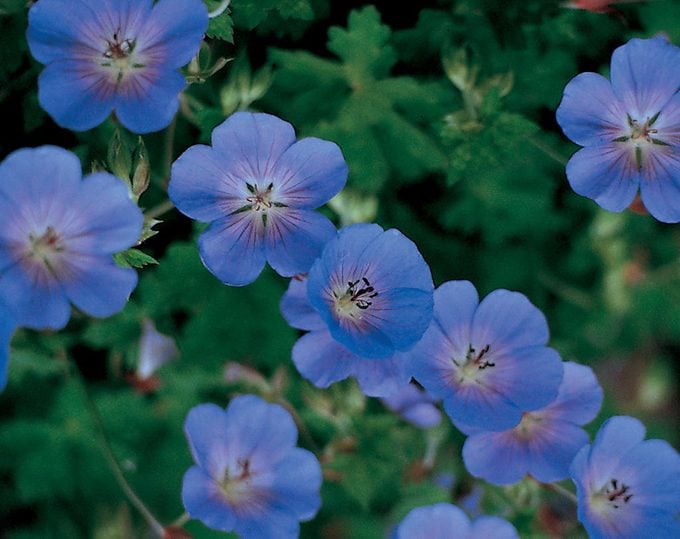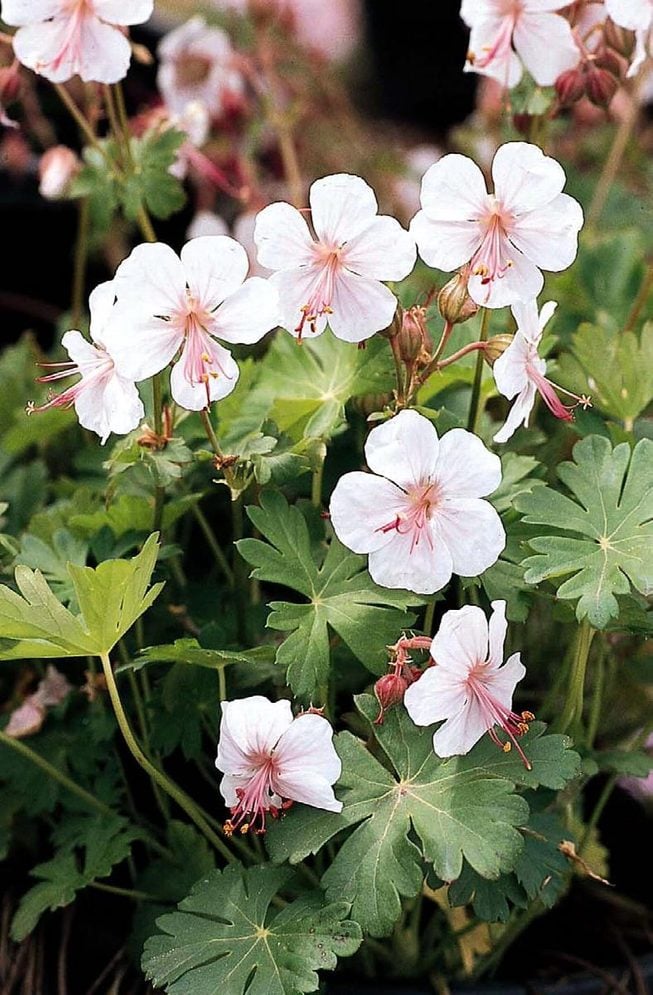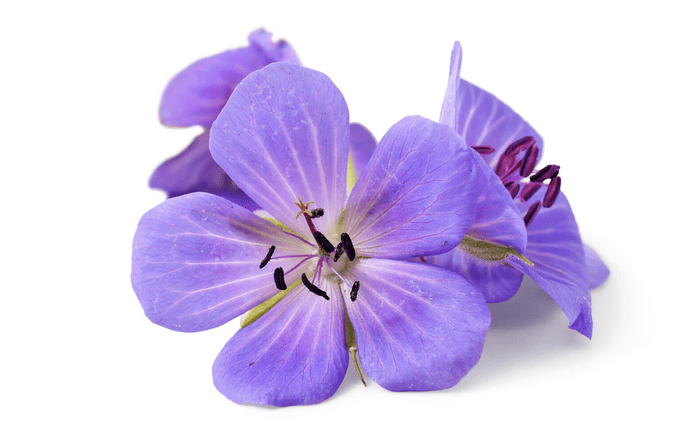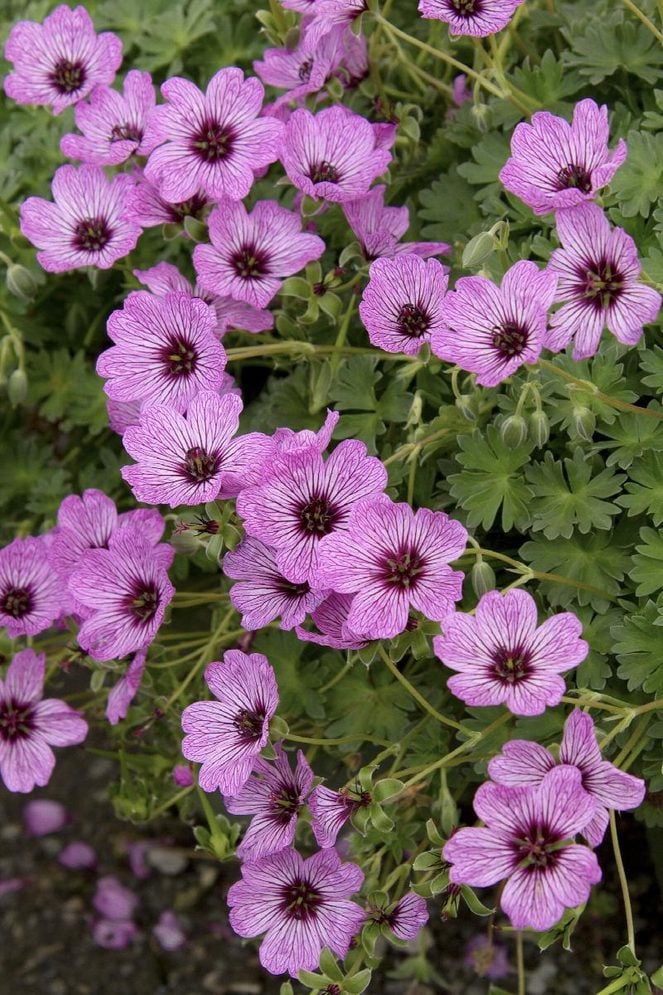Hardy Cranesbill Geranium Care and Growing Tips
Updated: Apr. 24, 2024
Perennial cranesbill geranium plants are easy to grow and highly adaptable. Enjoy the long-blooming flowers in many garden conditions.
Are Cranesbill Geraniums Annuals or Perennials?

Don’t confuse the cranesbill geranium with annual Pelargonium geraniums that fill garden centers every spring. All 300 species of cranesbill geraniums are perennials, which means they’ll come back each year.
Learn more fascinating geranium plant facts.
How to Grow Cranesbill Geraniums
- Scientific name: Geranium spp.
- Common name: True geranium or cranesbill
- Hardiness zones: 4 to 10
- Light needs: Full sun to partial shade
- Soil: Well-draining
- Water needs: Drought tolerant once established
- Flower colors: White, blue, pink, purple
- Attracts: Bees and butterflies
Georgia Clay, plant selections manager for Monrovia, says, “Cranesbill is really hardy and a good choice for anyone across the United States, from coast to coast and everywhere in between.”
These plants are low-maintenance and pretty adaptable. “They do well in full sun or partial sun and tend to like to be fairly dry—just don’t let them completely dry out. For the best flowering and most vigorous growth, choose a partial shade or full sun site. If they are getting hit hard with hot sun, you will need to water more frequently,” Georgia says.
Problems with these perennials should be few. “Slugs and snails can eat spring shoots, if they are too wet you can get mildew, but they are pretty stress-free plants,” she says. Deer generally leave these plants alone.
When Do Cranesbill Geraniums Bloom?

One benefit of growing cranesbill geraniums is their really long bloom cycle. Georgia has a trick to get the plants to rebloom after they start to slow down.
“I recommend shearing the plants back, and they will regrow within weeks. They will re-bloom and fill out again in the same summer,” she says.
When the plant begins to die back, cut them back in the fall after the growing season is done (between August and October). This will keep the plant dormant for the winter and help store its energy for the spring.
Does Cranesbill Spread?

These plants can and do spread by seed, but not uncontrollably—it’s not known as a weedy plant. Some varieties like Rozanne are sterile.
Can You Grow Cranesbill in Containers?
“It would make a great container plant,” Georgia says, crediting their long bloom period, unfussy nature and great drought tolerance. Keep in mind that these plants do need to go through a dormancy period in winter; she recommends that you wrap up the pots or put them in your garage.
Cranesbill Varieties

There is a big variety of hardy geraniums, so you can find a type that fits your landscape need. Ballerina grows 6 inches tall and spreads to 10 inches wide. Others like Rozanne or Biokovo are going to spread more, up to 2 to 3 feet wide.
A new variety, Storm Cloud, is more of a clumping variety, growing 1 1/2 feet tall and wide. “Storm Cloud has dark foliage that’s offset with semi-double blue flowers. Even when not blooming you get a really great show,” Georgia says.
Pink lovers should try Intense. “It’s one of my absolute favorites; it produces a ton of bright pink flowers throughout the season. The foliage goes red in the fall which is really fabulous, too,” she says.
Does Cranesbill Attract Pollinators

Georgia says based on the shape of flowers, she sees cranesbill attracting short-tongued insects, including native bees, such as mason bees and bumblebees, as well as butterflies.
About the Expert
Georgia Clay has worked for five years as the plant selections manager for Monrovia. She studied horticulture at Oregon State University.
Sources
Why Trust Us?
For nearly 30 years, Birds & Blooms, a Trusted Media Brand, has been inspiring readers to have a lifelong love of birding, gardening and nature. We are the #1 bird and garden magazine in North America and a trusted online resource for over 15 million outdoor enthusiasts annually. Our library of thousands of informative articles and how-tos has been written by trusted journalists and fact-checked by bird and garden experts for accuracy. In addition to our staff of experienced gardeners and bird-watchers, we hire individuals who have years of education and hands-on experience with birding, bird feeding, gardening, butterflies, bugs and more. Learn more about Birds & Blooms, our field editor program, and our submission guidelines.




















